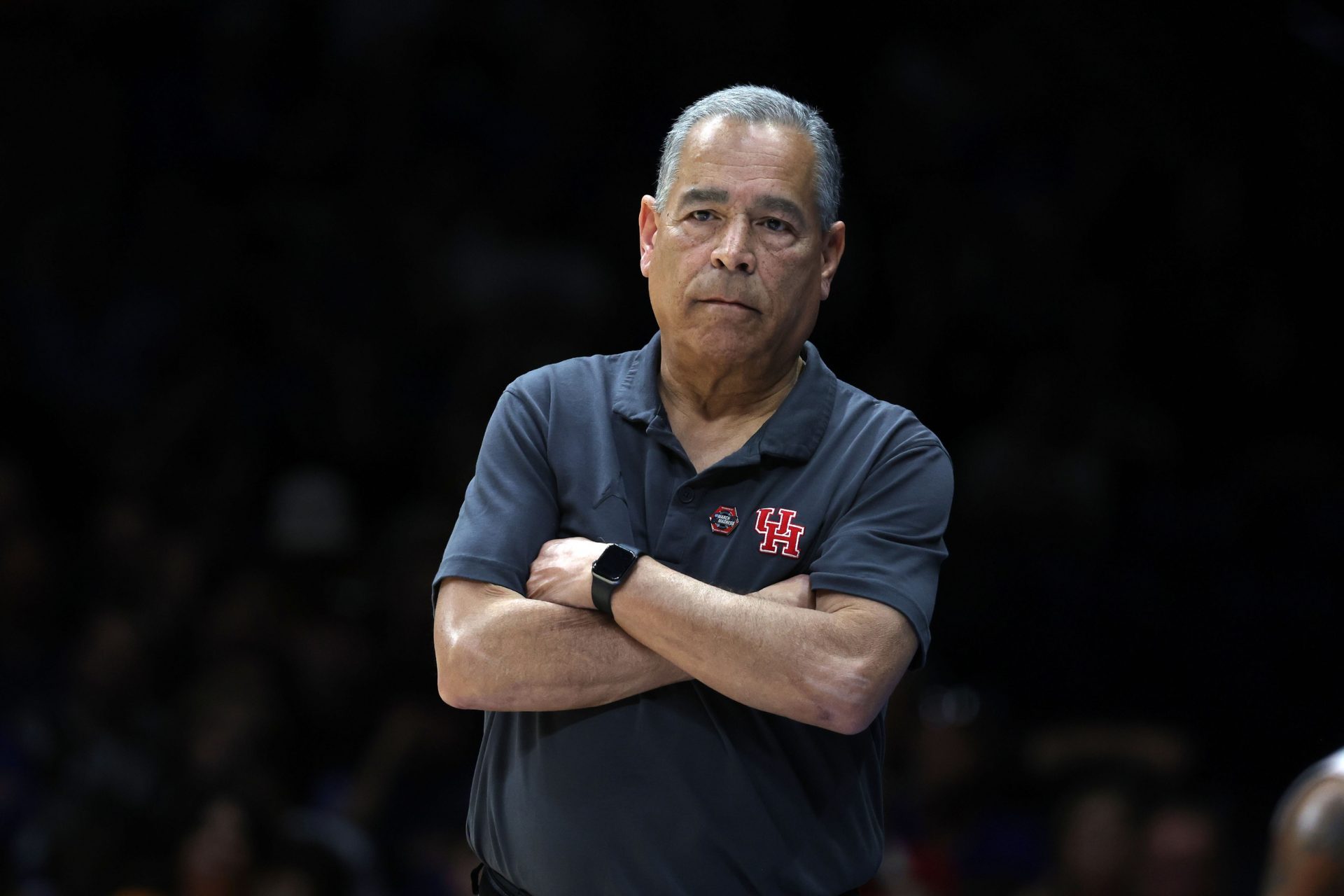Houston coach Kelvin Sampson is weighing the impact of the House v. NCAA settlement, a case that could redefine college sports. If approved in the U.S. District Court of California, the agreement would usher in a revenue-sharing model, allowing schools to distribute up to $20.5 million to athletes.
As programs prepare for this shift, Sampson’s Cougars focus on reaching San Antonio for the national championship.
Houston’s Kelvin Sampson Addresses the Coming Changes in College Sports
As the season progressed, discussions surrounding the House v. NCAA settlement became unavoidable. These talks began with university presidents and athletic directors, setting the foundation for what coaches must now navigate in roster management—should the agreement receive full approval.
“We’ve all had to have those conversations,” Kelvin Sampson told On3. “The real conversations had to [be between] the athletic directors and the presidents. That’s where the conversation started. … But the conversations between the ADs and presidents, the football coach and basketball coach are right behind them.”
He raised the question of distribution, stating,
“What are we doing here? How are we going to handle this number? What’s the disbursement like? What percentages are we looking at? We have to know because we have to recruit a roster.”
Houston coach Kelvin Sampson previewed how the House v. NCAA settlement would college basketball:
“The game will tell you what we’re going to do, and all we’re doing is reacting to it.”
(via @NickSchultz_7)
Read: https://t.co/nmgkWJUQfI pic.twitter.com/2YFSiYlZxf
— On3 NIL (@On3NIL) March 30, 2025
The settlement establishes a $20.5 million cap for the 2025-26 academic year, leaving schools to determine how those funds are allocated. Institutions with football programs are expected to direct 75% to 85% of that amount to football. Conversely, basketball-driven conferences such as the Big East will allocate a larger share to basketball.
However, this $20.5 million cap will not remain static. It represents 22% of the previous year’s average revenue for a Power Conference school and will increase by 4% annually under the settlement terms.
Sampson acknowledged that determining future allocations for basketball remains uncertain. He emphasized that the evolution of the sport itself dictates financial decisions rather than any single authority.
“Here’s a number for this year. I think it’s $20,500,000,” Sampson said. “That’s this year. This game is going to tell us what they’re going to do. … The game will tell you what we’re going to do, and all we’re doing is reacting to it. We used to be in control of this game. No. Nobody controls college basketball. We just sit and figure out what to do next. So right now, here’s what we’re dealing with. Next year, who knows where it’s going to take us. So, you never know.”
KEEP READING: Kelvin Sampson’s Dominance: 5 Straight NCAA Tournament Appearances, 3 Elite 8s
Power conference programs will likely continue prioritizing football in revenue distribution. At Texas Tech, for example, 74% of the allotted funds are expected to go toward football, while men’s basketball is projected to receive between 17% and 18%. Women’s basketball, baseball, and other sports will share the remainder, with women’s basketball receiving approximately $410,000.
Don’t miss a moment of March Madness! Download your 2025 NCAA Tournament printable bracket and stay on top of every game, matchup, and Cinderella story. Get yours now!


